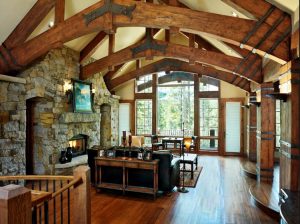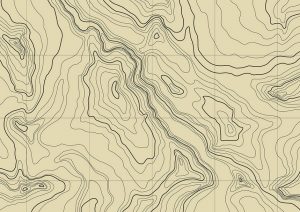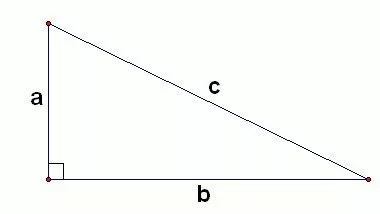The
Structure:

Imagine waking up everyday to enjoy your morning coffee on the back deck with a view like this! However the view wouldn’t be quite as enjoyable if the deck you were on was not structurally adequate. This particular deck underwent moderate settlement due to bowing in the lower exterior wall caused by the improper placement of the diagonal support posts shown in the picture to the right. These posts support the front edge of the deck by transferring the load through the post to its bearing point on the framing members of the exterior wall.
The
Topography:

Like many homes built in the beautiful blue ridge mountains of Blowing Rock NC, they are built as close to the edge as possible to achieve that million-dollar view. In most cases such as this one, builders choose to support the deck in other ways rather than using long posts extending all the way to the ground. This can save money in materials and produce a more aesthetically pleasing mountain like home. However we can’t let good views distract us from the risks at hand when building on steep grades such as this.
The
Problem:

The problem occurred because the bearing points for the diagonal support beams were not strong enough to withstand the load from the deck and the roof above. The exterior wall on which the load was bearing upon soon began to bow inward under the pressure, causing moderate settlement notable by the front edge of the deck moving in the downward direction. This can be quite scary to think of at heights of fifty plus feet.

Lesson Learned:
“Achieve a proper bearing before you go out staring.”
The lesson learned in this particular case is pretty simple. Achieve a proper bearing point that can handle the proposed maximum load. In this case the wall was simply not strong enough, especially in it’s weak lateral direction to be able to handle the load of the deck above. As a bonus let’s briefly discuss some of the forces that are at play in this situation. This type of construction has a lot to do with simple trigonometry. If you look at the picture above there are letters x, y, and z along each portion of the deck. The length of (Z), and/or the distance of (Y) will determine how much force will be on (X) in the direction of the arrow. The shorter (Z) is, the shorter (Y) will be, therefore putting more force on (X) causing it to pull away from the house. The longer (Z) is, the longer (Y) will be, therefore putting less force on (X). A good rule of thumb is to never have (Z) at an angle greater than 45 degrees.

